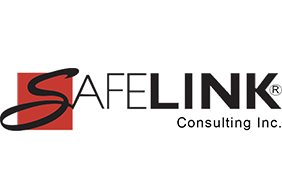Since many of us seem to learn better from our own mistakes or the mistakes of others, I’d like to share with you some common top ten quality mistakes made by businesses and how you can prevent them from happening in your organization.
In my reading on quality system issues, I came across an article based on the 10 biggest quality mistakes. The author most likely gathered his information from his experience in a number of different industries and most likely it did not include dentistry. However, I realized that as an auditor for quality systems in the dental laboratory industry, we find the same quality mistakes as this author pointed out.
These ten mistakes will be covered this month and next month. They are:
-
-
1. Limiting quality objectives to traditional quality topics
-
-
2. Holding management reviews once or twice a year
-
3. Sending out long, complex customer surveys
-
4 .Assuming everyone knows what “nonconforming” looks like
-
5. Failing to utilize the corrective action process
-
6. Using questionnaires to evaluate suppliers
-
7. Applying document control to official documents only
-
8. Focusing on petty details
-
9. Training some types of personnel, but not all
-
10. Doing anything just because an external auditor told you to
This month I’ll cover mistakes One to Five.
Number One: Limiting quality objectives to traditional quality topics
Quality objectives should be clear and measurable. Since the quality of your product will determine the success of your business, you should determine the quality objectives that matter the most to your business. An example is the percentage of remakes and/or adjustments that are acceptable to your customers. Since you are manufacturing patient-specific devices that have so many input variables, it seems impossible to strive for “zero defects”. So one of your quality objectives may be to establish a remake rate that is acceptable to your dental clients. The same for your adjustments. Through your quality system you will measure the actual rates to see how they compare to your quality objectives and then take action to improve as needed.
Number Two: Holding management reviews once or twice a year
The minimum requirement for a management review meeting (MRM) is annually to comply with FDA and many quality management systems, therefore that seems to be the popular interval for these meetings. Even if you are reviewing data more frequently, management may not be involved in analyzing data, making decisions, and taking action. The purpose of these meetings is to prevent problems before they happen. Waiting until the annual MRM to review all of the data isn’t timely enough to be preventive. As long as you document these frequent MRM’s, you can avoid the laborious once a year review meeting.
Building a Quality Improvement Team
Number Three: Sending out long, complex customer surveys
Most labs that we visit have a customer feedback system, but it is usually specific to a case. Some labs send out surveys and the doctor checks off his answer on a scale. To truly gather useful information, perhaps you should consider just asking questions such as “What do you like or not like about our products?” “What could we do different?” The answers to these types of open-ended questions are much easier to take action on. Remember though that any negative information received from your clients must be incorporated into your corrective action process which will be further discussed in mistake number five.
Number Four: Assuming everyone knows what “nonconforming” looks like
In an assembly line manufacturing plant that is releasing identical items, this would be more applicable. Those rejects would be removed from the plant or stored in a location where everyone can identify it as nonconforming product. Because you’re manufacturing patient-specific devices, you don’t typically have finished products that were returned by the dentist for remake stored in the facility. If you do have returns that shouldn’t be re-used, then it’s important that they either be discarded or retained in an area properly marked so everyone in the lab knows that those items are not to be used. In the purchasing area, it’s typical to have a quarantine area for materials that are being returned to vendors/suppliers. This prevents workers from using materials that don’t meet your requirements. Everyone in the lab must be aware of all quarantine areas and all materials, equipment, etc. that are not to be used in the manufacturing process.
As a part of training of workers, FDA requires that they be able to recognize nonconforming product and how their failure to produce conforming product affects the final product. Another part of this issue in the dental lab is final inspection. Everyone who performs final inspection must understand and acknowledge the parameters for release of only conforming product. A final inspection checklist helps identify the criteria to be used by trained individuals who make the decision to release product.
Number Five: Failing to utilize the corrective action process
The corrective action process is intended to provide a systematic method of investigating problems, identifying their causes, and keeping them from happening again. Implementing a system that is not too complicated will result in a better used system. The common mistake in dental labs in regard to their corrective action process is that they make the statement that the corrective action taken was “didn’t fit so remade it”. That may be the result of what was done for that one case to satisfy the client, however, it doesn’t show the root cause of the problem which is why it didn’t fit. Root cause should be traced to one or a combination of the following root causes: technician error, dentist error, material problem, or equipment malfunction.
Review your approach to corrective action and make it as simple and intuitive as possible so that it just becomes a part of your every day manufacturing processes. Whenever it’s possible use electronic media rather than paper in the process.
Get dental lab compliance and risk assessment expertise.
Next month mistakes Six through Ten will be provided by SafeLink Consulting so be sure to read them and take action to ensure your quality management system is working for you.
Need help ensuring you're not making these 5 mistakes in your organization?
Your first step is to discuss these mistakes with your management team to identify areas of improvement. If you need help, contracting an expert such as SafeLink Consulting is a step in the right direction. Contact us to learn how services are utilized to benefit your business to assist you in achieving a more effective quality management system!
Learn more about FDA Dental Compliance
Learn more about Device Registration and Listing for Medical Devices.
SafeLink Consulting can assist your business with developing a Quality System and Good Manufacturing Practices - GMP for medical devices manufacturers including the dental lab, workplace health & safety training, infection control training and HIPAA training online, plus more. Learn more about FDA Dental Regulations.






